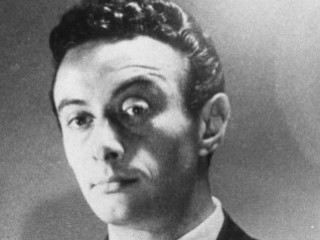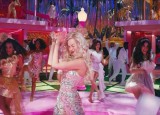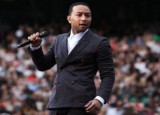
Lenny Bruce biography
Date of birth : 1925-10-13
Date of death : 1966-08-03
Birthplace : Mineola, New York, United States
Nationality : American
Category : Arts and Entertainment
Last modified : 2011-10-13
Credited as : comedian, ,
American comedian Lenny Bruce made fun of everything held sacred during the 1950s and early 1960s, from the Lone Ranger television character to the Pope and Jesus Christ. His irreverent "anything goes" style eventually caused him to be jailed for public obscenity.
Lenny Bruce shocked and entertained audiences during the politically conservative years following World War II. His irreverent and unabashed antics failed to amuse everyone, and on a number of occasions he was charged with public obscenity. He was convicted in several states and spent his final years involved in court appeals, defending his right to free speech. Bruce's life and career ended tragically when he died of a narcotic drug overdose at age 40.
Bruce was born Leonard Alfred Schneider in Mineola, New York on October 13, 1925. As a child during the Great Depression, he lived with his mother and assorted relatives in a singularly Jewish environment. He saw his father infrequency, and life with Bruce's mother, comedian Sally Marr, was erratic at best. Bruce attended six elementary schools, sold pop bottles for spending cash, and stole lunches from other students. By his own admission, he sniffed aerosols as a youngster. Bruce's mother was completely uninhibited and supported herself in unconventional ways. For a time she operated a dance studio and furnished adult escorts. As Bruce grew to adulthood, his mother developed her own comedy act and performed in nightclubs. From his mother, Lenny learned to laugh at life's irregularities.
Bruce left home at the age of 16 and went to live with a couple named Dengler on their Long Island farm. He stayed on the farm until shortly after the beginning of World War II. In 1942, Bruce joined the U.S. Navy. After boot camp he served as an apprentice seaman on the U.S.S. Brooklyn. The ship was stationed in France and Italy, where Bruce experienced live combat conditions. He longed to return home. In order to secure a discharge, Bruce dressed like a female sailor until his superiors requested a dishonorable discharge. Through the intervention of the Red Cross, the Navy reversed the circumstance of the discharge and Bruce received an honorable release.
No longer able to live at the Dengler farm, Bruce returned to live with his mother. She was working as a stand-up comedian at various clubs around Brooklyn. Bruce accompanied her to work and watched her and the other performers present their routines. Bruce himself took the stage one evening at the Victory Club, as a stand-in master of ceremonies. He used the stage name "Lenny Marsalle" that evening but later settled on Lenny Bruce. Despite pre-show jitters, Bruce composed himself and delivered a string of ad libs. To his surprise, the audience laughed and found him marginally amusing. Bruce, who performed without pay that first evening, was instantly addicted to the world of entertainment. In time, he secured an agent and played amateur clubs and contest, sometimes for a $2 fee or for prizes. Bruce wrote an act for himself to perform on stage so that he would not get tongue tied. He did excellent impressions of famous movie stars including Humphrey Bogart, James Cagney, and Edward G. Robinson. In 1947, he used those impressions to win Arthur Godfrey's Talent Scouts, a radio show talent contest.
Bruce performed in vaudeville shows and in burlesque theaters during the late 1940s, but in time he joined the merchant marine, working on the Luckenback Line to the Middle East. As a merchant seaman, Bruce visited over two dozen countries. At every port of call he saw little of the terrain and the culture beyond the shore bars and brothels. Bruce adopted the promiscuous lifestyle of many soldiers and seamen among his peers. On board the merchant ships, he learned to smoke hashish.
Shortly before he sailed with the merchant marine, Bruce met an exotic dancer named Harriet "Honey" Harlowe. Bruce was enamored with Harlowe after spending one evening with her at a party. The intense mutual attraction left a strong impression on Bruce, who eventually tracked her down by telephone while he was working on a merchant boat that was docked in Spain. The 25-year-old Bruce found Harlowe willing to wed and returned home as quickly as possible.
The newlywed couple re-entered show business in 1951. Bruce performed comedy while Harlowe sang and danced. They performed together in nightclubs. Bruce determined that he should raise money to pay for singing lessons for Harlowe, to enable her to resume her former career as an exotic dancer. Bruce, true to his outrageous comedic nature, concocted a false identity for himself. He assumed the identity of a priest and solicited donations for a leper colony in Guyana. Bruce collected $8,000 in three days before frustrated Miami law enforcement officials arrested him. He ceased his gigolo-like tactics and focused his efforts toward his stage career and his marriage.
The couple worked together until 1954 when both suffered severe injuries in a violent car crash in Pittsburgh. Bruce was thrown from the car, fractured his skull, and suffered lacerations. Harlowe's injuries were much worse. She was unable to walk for four months. Eventually the couple recovered and moved to a chicken farm in Arcadia, California that was owned by Bruce's father and stepmother.
Bruce, who studied acting at the Geller Dramatic Workshop in Southern California, was acutely ahead of his time in his political sympathies. He had great concern for the poverty stricken, discounted anti-Communist propaganda, took issue with capital punishment and what he viewed as other social shortcomings. On stage, Bruce made fun of the established traditions of Middle America. He was a talented speaker, and although his act was meticulously prepared and rehearsed, he projected a spontaneity to his audience. His natural gift for weaving stories, combined with an unnatural ability to ramble into a stream of consciousness repartee, was fundamental to his genius.
Kitty Bruce was born in 1955, the only child of Lenny Bruce and Harriet Harlowe. Soon Bruce became increasingly possessive of his wife, and developed a dependency on narcotic drugs. The couple divorced in 1957.
Within a year, Bruce established a following at several reputable nightclubs in San Francisco. His popularity soared as his reputation for using profanity and obscenity in his act grew. On stage, Bruce held nothing sacred. He clowned about perversion and sexual fantasies, taunted those who held the tenets of Judeo-Christian thought, and described the deep-seated racial tension in America. Lenny Bruce achieved high visibility. His antics were broadcast through the rapidly rising recording industry as well as through television. Many recognized the underlying truth in the Lenny Bruce message. This was true of the late San Francisco columnist Herb Caen, quoted in Playboy. "They call Lenny Bruce a sick comic-and sick he is. Sick of the pretentious phoneyness of a generation that makes his vicious humor meaningful." By the early 1960s, Lenny Bruce was invited to perform at Carnegie Hall. Despite the "adults only" nature of his act, he played to sellout audiences in 1960 and 1961.
In the midst of overwhelming popularity, Bruce was arrested for obscenity in San Francisco in October 1961. The case went to trial early in 1962 and ended in acquittal for Bruce. Later that year, he was arrested at the popular Gate of Horn Club in Chicago. In 1963, Bruce was refused admission to both England and Australia following a narcotics arrest and drug conviction earlier that year.
A conviction on obscenity charges in New York on November 4, 1964, caused another setback for Bruce, despite his earlier success in evading similar charges on the West Coast. The New York trial lasted six months. Despite petitions and testimony filed by prominent personalities including Gore Vidal and Norman Mailer, Bruce was convicted because he used "obscene, indecent, immoral, and impure" language and gestures in his performances. Bruce was sentenced to four months in jail, during which time his conviction in Chicago remained on appeal.
Bruce returned to San Francisco following his conviction in New York. Increasingly stressed and obsessed by his legal problems, he was determined to exonerate himself. Unfortunately, he was severely addicted to heroine at that time and lived mostly in seclusion after 1965. He stayed close to home and rarely worked. He gave his final comedic performance on June 25, 1966, at the Fillmore Auditorium in San Francisco. A few weeks later, on August 3, 1966, Bruce died of a drug overdose in Hollywood. His death was ruled accidental; he was 40 years old.
Shortly before his death, Lenny Bruce published his autobiography, How To Talk Dirty and Influence People. Another publication, The Essential Lenny Bruce, went to print in 1966 and featured his collected comedy routines. The 1971 Broadway play, Lenny, was based on his life, and a movie by the same name was filmed later. A retrospective biography, Ladies and Gentlemen, Lenny Bruce!! was written by Albert Goldman and published in 1974. Kitty Bruce compiled assorted memorabilia into a manuscript entitled The Almost Unpublished Lenny Bruce: from the private collection of Kitty Bruce. She published the book in 1984. In 1998, Bruce was the subject of a movie produced for the Home Box Office (HBO) cable network.
In the late 1950s, Lenny Bruce made a series of comedy recordings and selected albums including, The Sick Humor of Lenny Bruce and Interview of Our Times, later reissued on compact disc in 1992 as a two-volume release entitled The Lenny Bruce Originals.
















